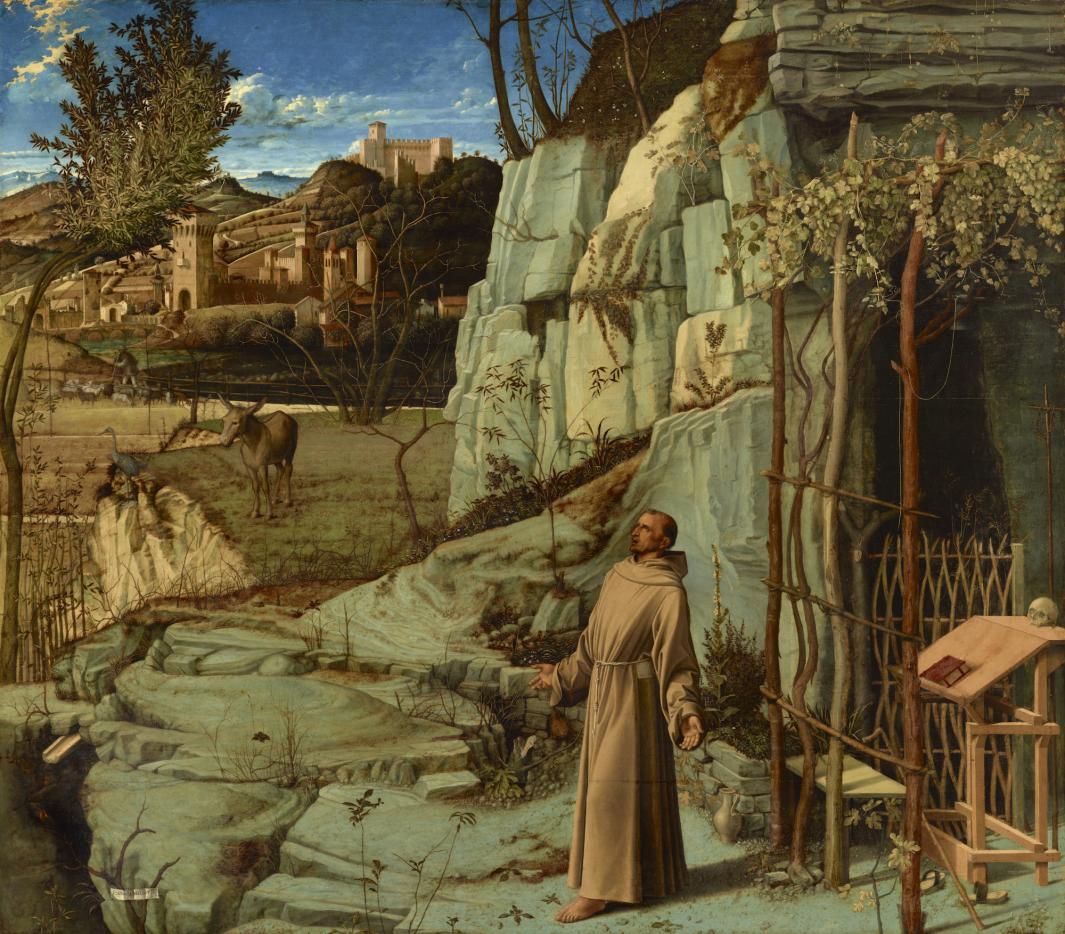One of the most familiar and beloved paintings at The Frick Collection, Giovanni Bellini’s St. Francis in the Desert (c. 1480), is also deeply enigmatic. The artist has imagined this medieval saint alone in a stony wilderness, stepping forward from his simple shelter into a golden light that seems to transfigure him spiritually. For centuries, viewers of this masterpiece have puzzled over the meaning of Bellini’s composition and have sought explanations in a variety of pictorial and textual sources. Until recently, however, the artist’s practical conception and realization of this extraordinary vision have remained largely unexplored.
In March 2010, St. Francis was sent to The Metropolitan Museum of Art for an unprecedented technical examination by a team of specialists led by Paintings Conservator Charlotte Hale. They employed infrared reflectography to create the first complete image of the underdrawing that guided the artist’s hand as he painted, and microscopy to study his exquisite manipulation of the oil medium. During a collaboration initiated by the Frick’s curator Denise Allen, an international group of conservators, curators, educators, and art historians assembled to interpret the results of the investigation and to address their implications for the painting’s meaning. These collective findings will be presented in the Frick’s upcoming dossier exhibition, which opens on May 22. The exhibition is organized by Susannah Rutherglen, Andrew W. Mellon Curatorial Fellow, The Frick Collection.
The exhibition was made possible by The Andrew W. Mellon Foundation.
